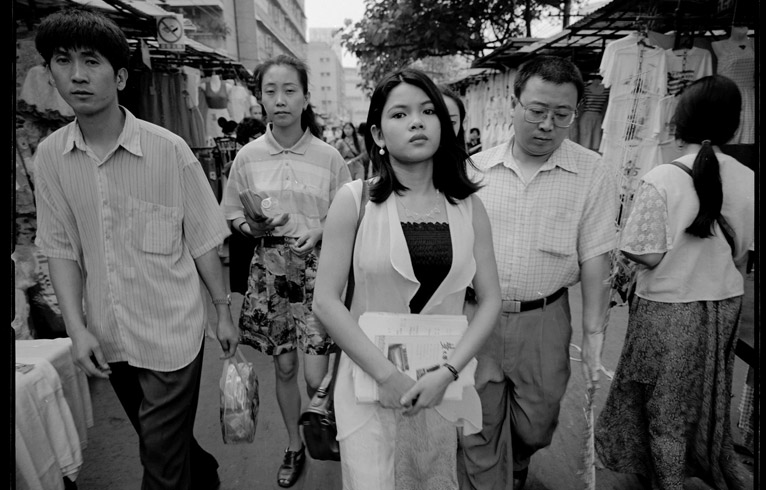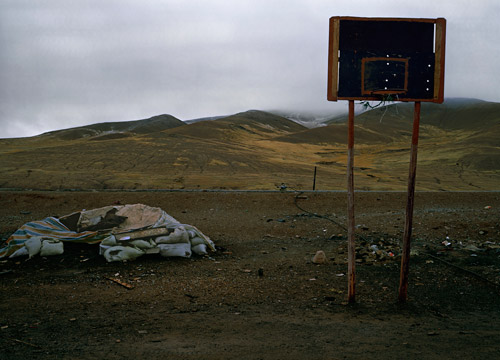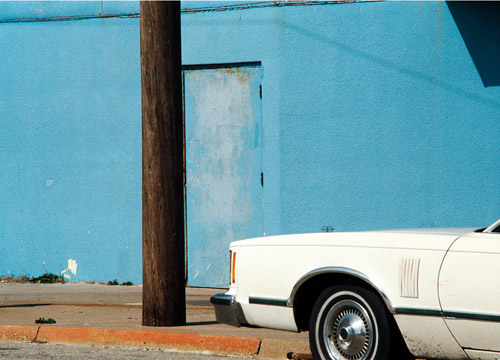LIANZHOU FOTO & CHINESCAPE
| February 17, 2011 | Post In LEAP 7

As with most large-scale periodic exhibitions, in Lianzhou we find two festivals—the official show that unfolds in more formally curated gallery spaces, and a parallel program happening beyond that, including a range of events taking place in the small town itself. The latter “festival” can easily escape the public eye—a dead zone full of heretofore unrecorded images and sounds. However, whether it was the calligraphy exhibition next to the Breadbasket pavilion; the whispers coming from the riverside market each night after dark; a hard-to-pinpoint hodgepodge of documentary photography; the revelry of the opening ceremony; or even the new bars built by the Lianzhou city government in the spirit of forging a new “trademark urban culture” at Chinese-style photography festivals, it is precisely these under-the-radar currents of creativity that produce a more authentic body of work. And only with time can these nuances be understood.
The organizing committee’s decision to invite two art critics to join the curatorial team reflects a thoughtful effort to inject the photography festival with new life for its sixth edition. The addition of curators Fei Dawei and Bao Dong brought new photography, new photographers, and new exhibition strategies to the table, mainly in the No. 2 Shoe Factory exhibition venue’s solo exhibitions of several young artists. A number of other works served to elaborate the festival’s “artistic” claims: one installation, by photographer Wang Ningde and yet not employing a single photograph, guides spectators to directly experience the “breath” of light and time, allowing them to feel the inner workings of photographic technology. Weng Yunpeng appropriated the inane images and bylines of film and television, piecing together a smattering of misleading assertions that have circulated and continue to circulate in the mass media age. He ultimately assembles a profound investigation into the authenticity of images and media. Similarly, Yang Zhenzhong’s CC Gallery offers a critique of the system by which art photography circulates. A faux gallery, installed inside the exhibition, it actually does sell works from a space that even features a listless gallerina at a desk. Better referred to as “art” pieces, such works are generally viewed in museums, formalized institutions, and commercial galleries. But when they enter, in bulk, into the context of more mainstream “photography festivals” like Lianzhou Foto—events that cater more to photographers and photography enthusiasts than collectors—such works emerge by contrast as the “artistic” section.

Inevitably, the collective presence of “contemporary art” on the Lianzhou festival scene demarcates a visible boundary between the “art world” and the “photography world.” To my surprise, this boundary is heavily guarded. It resembles a double-sided mirror—one face reflects the conceptual and technical limitations of the photography world, while the other face reflects the contemporary art world’s relative ignorance of the world of photography. Of course, this distance can be beneficial, even productive. And yet when an (art) collective like Birdhead—a Shanghai duo who have a deep understanding of photography—bring with them a torrent of their signature, stylized images of Shanghai city life to Lianzhou, they still run up against questions like, “Does this count as photography?” and “Does this kind of picture need to be taken?”—queries that would never arise in art circles. Yet the main curator of the exhibition, Fei Dawei, threw himself into the task, resulting in a show executed at a high standard, and one that ulimately serves a broader, more expansively defined photography circle. Fei Dawei’s greatest gift to Lianzhou is the exhibition of social theorist Jean Baudrillard’s photography, along with the ensuing debate on his theory of photography which such a display prompted. Quotations of Baudrillard’s words and symposia in Chinese translation are posted all over the exhibition venue. For Baudrillard, photography was the medium through which one arrived at the essence of the real world. This notion was perhaps the most important source of inspiration for the festival’s theme, “Is the World Real?” Baudrillard’s widow compiled approximately fifty photos—landscapes and still lifes that play with light, shadow, and swatches of color—which quickly turned the Candy Factory exhibition space into the festival’s most visited venue. One evening, a stray dog, his back dotted with orange sunlight, walked into the gallery and observed the exhibition: real life echoing Baudrillard’s colorful photographs. But even more captivating and valuable to the festival were the philosopher’s meditations on photography. When taking a photograph, this renowned thinker had the humility to establish himself as reality’s recipient, rather than its captor──it was not the object that was holding still for the shot, but rather the photographer’s fixed gaze. “I do not take the picture, the picture takes me.” What truth can we ultimately arrive at through Baudrillard’s dissolution of the self in the act of photography?
“Chinescape: A Contemporary Chinese Landscape Photography Exhibition,” which opened at the same time as Lianzhou Foto, offers a pertinent response. Curator Zeng Han has selected eleven photographers whose works confront the landscape of contemporary China: high-density urban architecture with the appearance of an extraterrestrial industrial site, a once-natural environment violently transformed by mankind. All eleven photographers use large format cameras to take long-range, long-exposure photographs. While they endow their photographic targets with subjectivity, they transform themselves into objects—precisely the complete subject to object transformation that Baudrillard attempted with his automatic camera loaded with 35 mm film.

With regard to the technical aspects of photography, the photographers in “Chinescape” are even more successful at obtaining the “fixed gaze” advocated by Baudrillard. The wonders of contemporary China revealed by these images precisely echo what Baudrillard called “hyperreality.” But it is only in Baudrillard’s own photographic practice that this “hyperreality” manifests itself in over-saturated coloration and concealed subjectivity, whereas the realities of “Chinescape” are more restrained and tempered. Of course, the circumstances differ. Photographers abroad often linger on matters of sensory experience when considering the Chinese landscape, while domestic photographers have a more profound observational understanding of the Chinese reality and, moreover, often come from backgrounds in photojournalism. Thus, they produce images that reflect a greater degree of criticality.
It is also worth mentioning that Times Museum, the venue hosting “Chinescape,” is itself one of the wonders of China’s urbanization. Sited in a residential high-rise on the outskirts of Guangzhou, Rem Koolhaas’s design assigns distinct functions to various, non-contiguous floors. The gallery is on the top floor. Standing on the terrace, people can see a landscape of that ambiguous zone where city meets country. The view is absurd and magnificent to the point where one imagines viewers will lean against the railing and ask themselves, “Is The World Real?” Aimee Lin

